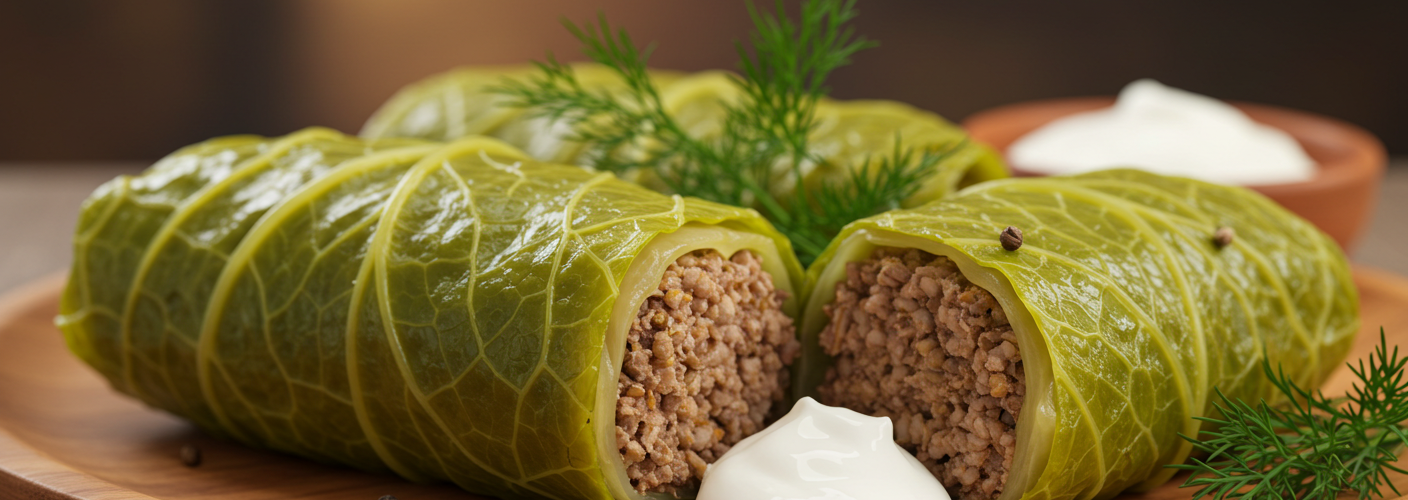Sarma, a dish that has warmed the hearts and stomachs of many across the Balkans, is more than just a meal; it is a symbol of cultural heritage and family gatherings. At its core, Sarma is simply cabbage leaves wrapped around a savory filling, but this beloved dish carries with it a rich history and an array of flavors that reflect the region’s diverse culinary landscape.
The Ingredients of Sarma
The main star of Sarma is undoubtedly the cabbage. Traditionally, sour cabbage leaves are used, which add a unique tanginess to the dish. However, fresh cabbage can also be employed in making Sarma, particularly for those who prefer a milder taste. The filling typically consists of a combination of ground meat—most commonly pork, beef, or a mixture of both—and grain, often rice. This combination not only adds texture but also ensures that each bite is hearty and satisfying.
To enhance the flavor profile, various herbs and spices are incorporated into the filling. Common additions include paprika, black pepper, garlic, and onions, which contribute depth and aroma. Some variations might even include smoked meats or bacon, bringing an extra layer of richness to the dish.
The Art of Wrapping
Wrapping the filling within the cabbage leaves is an art form in itself. The leaves must be handled with care to avoid tearing, which could lead to the filling escaping during cooking. Each leaf is typically filled with a spoonful of the meat and grain mixture, rolled tightly, and then tucked in at the ends to create a neat package. This process is often shared among family members, turning the preparation of Sarma into a bonding experience, especially during holidays and special occasions.
Cooking Sarma
Once wrapped, Sarma is typically placed in a large pot, layered with additional cabbage leaves and sometimes sauerkraut to create a flavorful base. It is simmered slowly on the stovetop or baked in the oven, allowing the flavors to meld together beautifully. The cooking process can take several hours, but the anticipation is part of the joy of preparing this dish. A generous splash of broth or water is added to keep the Sarma moist, resulting in tender cabbage and a filling that is bursting with flavor.
Regional Variations
While the foundation of Sarma remains largely consistent, regional variations abound. In Hungary, for example, it’s common to find chili peppers or paprika influencing the dish’s flavor, while in Bosnia, a richer filling with a blend of meats is often preferred. Each version tells a story of the local ingredients and cooking methods, showing how this humble dish has adapted over time.
A Symbol of Togetherness
Sarma is more than just a meal; it embodies tradition and togetherness. It is a dish that brings families and friends to the table, inviting them to share stories, laughter, and love. Whether enjoyed during festive occasions like holidays and weddings or as a comforting dinner on a cold winter’s night, Sarma invites everyone to savor the moment.
In conclusion, Sarma is a culinary delight steeped in tradition and rich in flavor. Its combination of cabbage, meat, and grain, wrapped lovingly into neat parcels, represents not only nourishment but also the ties that bind us to our culture and loved ones. The next time you enjoy a plate of Sarma, take a moment to appreciate the history and heart that went into its making.




Add comment